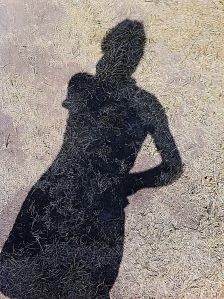Our Farm, Atira Moon, is surrounded by other farms, other pastures, other pieces of prairie. Most, if not all of the farmland in our county is “conventional”, meaning the crops are genetically modified and are treated with chemical fertilizers and pesticides. Bulter County is also oil country, and there are oil wells and pump jacks and collection stations all around.
Some days the idea of keeping pure and staying true to our Earth Mother on our property seems almost futile. The other farm’s fertilizer and chemicals will run off into our ponds and land. The crop duster’s spray will drift over upon us. The pollen of the GMO crops will intermingle with what is growing here. The pumpjack next door keeps pumping away, albeit sporadically.
As opposed as I am to conventional farming methods, I am still saddened to see the drought and heat burned and ruined crops and the brown and crispy pastures of the neighbor’s horses. It is as dry as I have ever seen the state of Kansas and I have known this part of the world pretty well since 1965. Here is what our lawn looks like today:
That grass had needed several mowings this Spring, and I don’t mean in the “need mowing” in a “subdivision” lawn asessment sort of way, but in a “down home country” sort of way. Like, snakes could have hid in this stuff just a couple of months ago.
But lawns, really, are the least of our worries. We don’t put much stock into manicured lawns out here. We have other more pressing concerns as far as grass goes. Like our pastureland.
We had a great portion of our land, perhaps 15 acres, plowed up and replanted early this spring as there was fescue grass planted there for the previous owner’s cattle. We don’t care for this rough, unnatural fescue grass, and envisioned natural prairie grass growing instead. (Why is it the natural grass wasn’t good enough in the first place?)
The plan was to plow up (or disc up) the fescue and replant native grass. But the fescue had quite a hold on the ground. Our choices were: 1. Disc the fescue, then plant the native grass and hope the residual fescue would be taken over. 2. Burn the fescue, then disc, then plant the native grass. 3. Spray Roundup herbicide and kill the fescue, so the native grass did not have to compete with the fescue to grow.
Only the first two options were ever given thought as we are vehemently opposed to the use of Roundup. Burning is something many farmers and ranchers do, and Nature herself does this, with lightning strikes.
But it had been an extremely dry fall and winter and then a dry early spring too. Everyone kept waiting for the rain to finally arrive, but it really never did. At least not in any normal amount. Rain clouds would form, and seemed to begin to fall, invariably, about 50 to 100 miles east of here, where they have more moisture than what they really want or need. So burning was really out of the question. It was just too dry.
John our hay man, doesn’t like burning either. But early this spring before going ahead with the native grass planting plan he called me one more time and left me a voicemail and again, offered plan number three. Roundup then plant. The investment in native seed was several thousand dollars. Without proper preparation of the soil, the expensive seed might not grow at all.
I still remember where I was when I listened to the message. It went straight to my throat. I could not speak if I tried. The idea of hundreds of gallons of that horrible herbicide on Atira Moon made me physically ill. I could not even call John back myself. I took some time to compose myself but then could only manage to have my husband call John and talk for both of us. I didn’t think I could have a conversation about Roundup without crying, or vomiting or both.
So in the end we went with plan number one. Disc up the fescue, plant native seed and then hope for the best. With a decent amount of rain, we had a chance.
Except, we have not had a decent amount of rain. At all.

